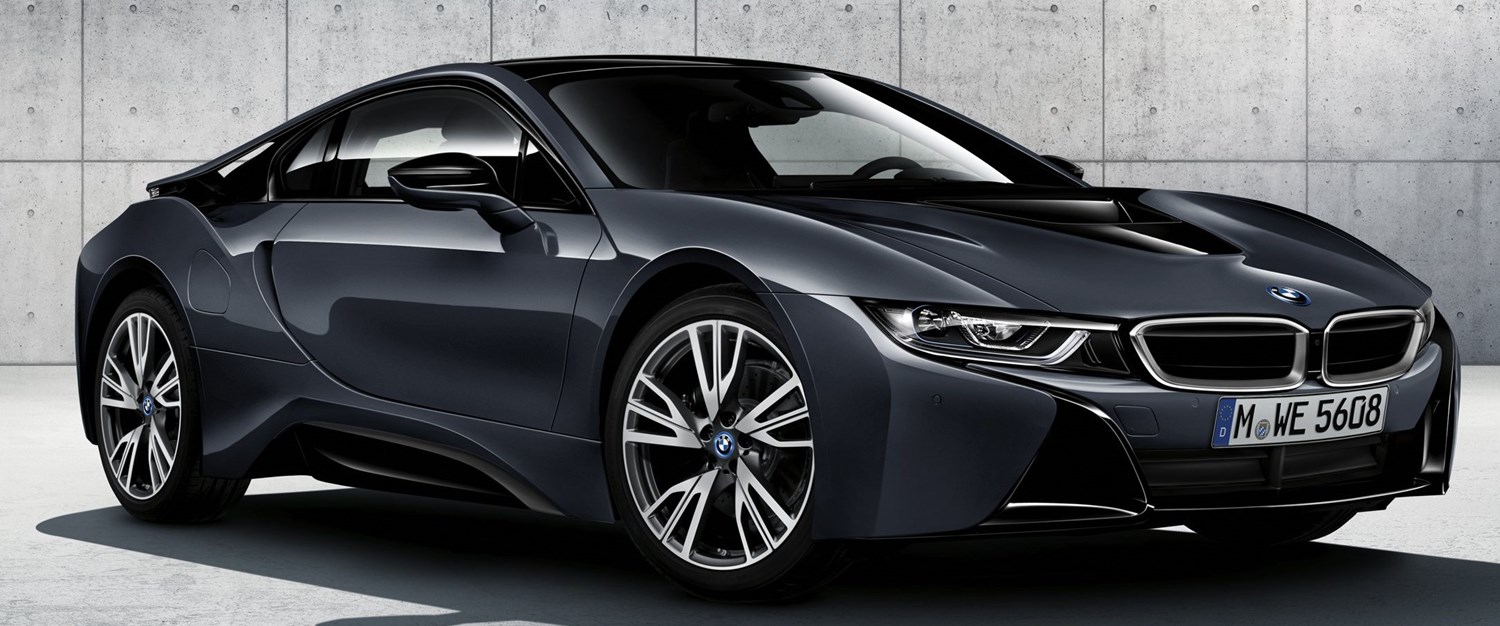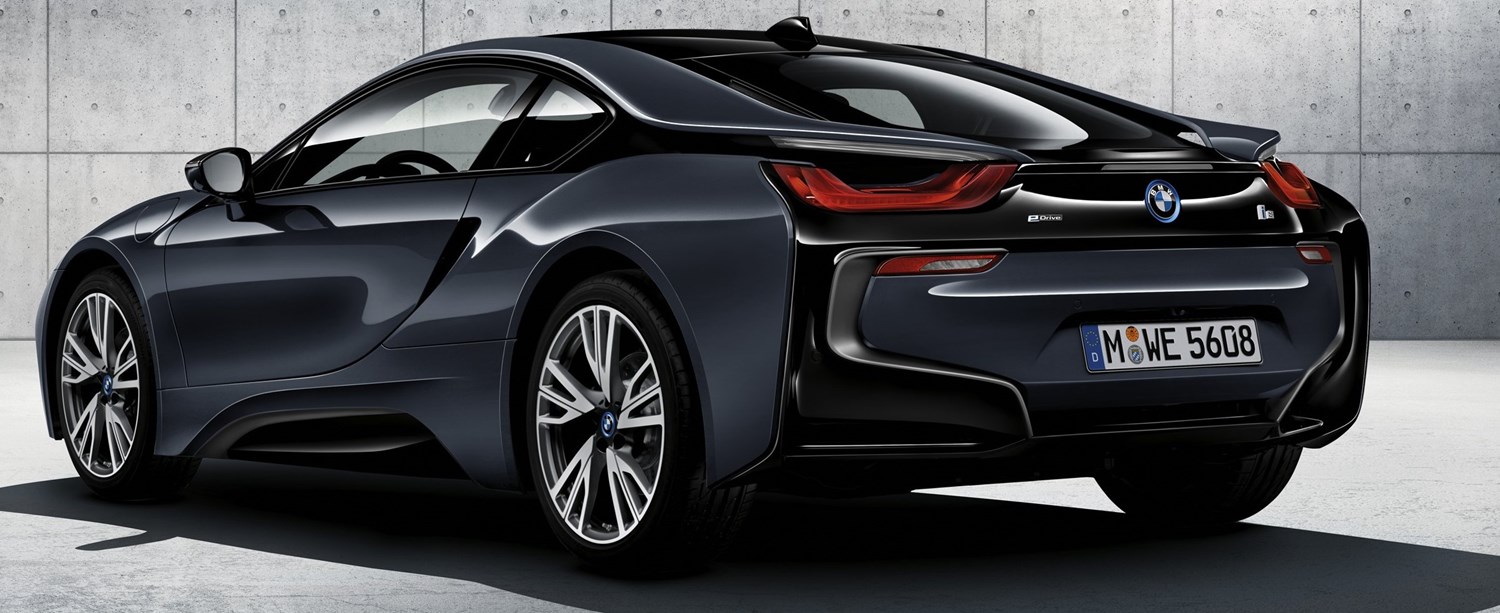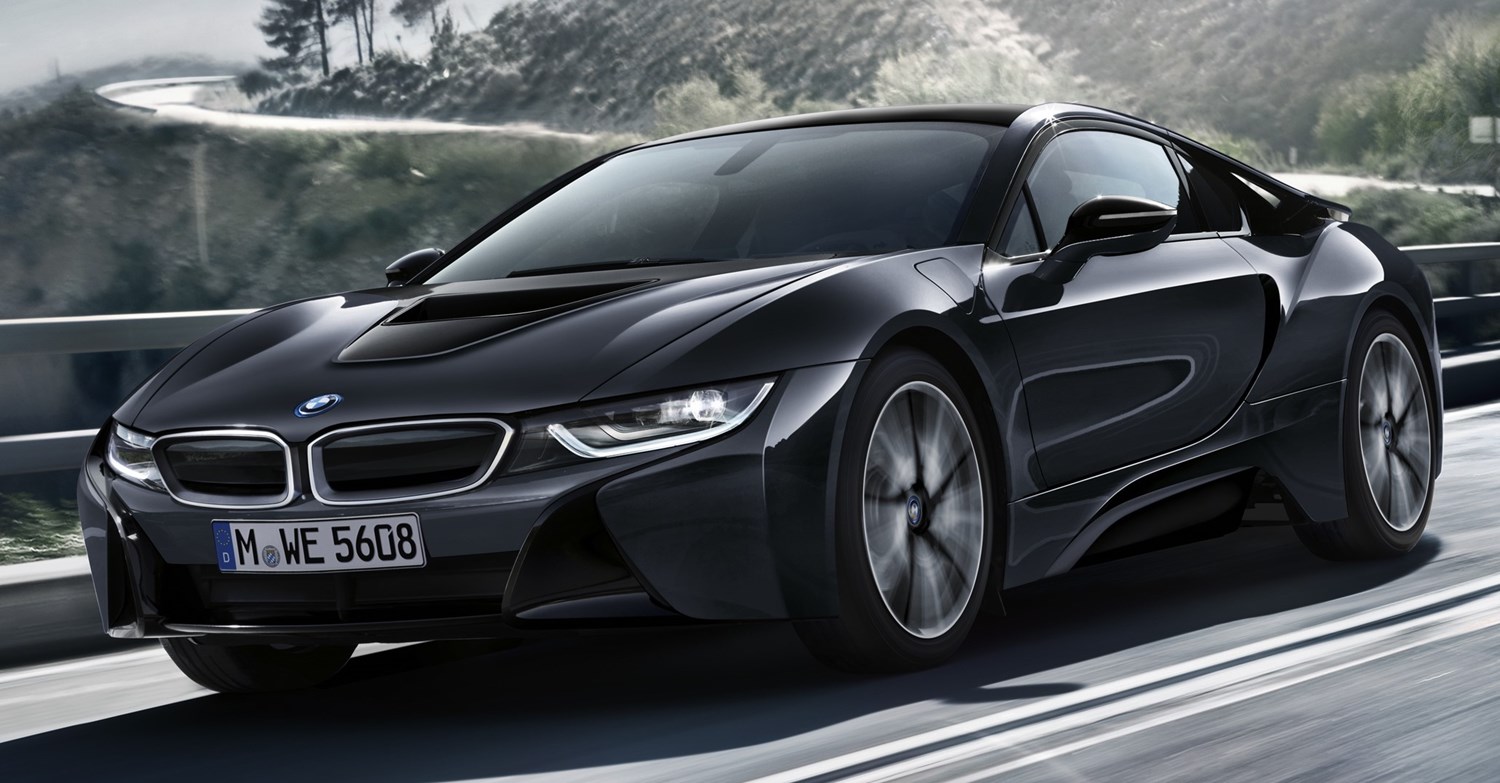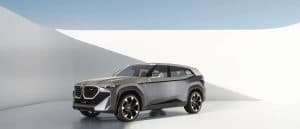Model review
The BMW i8 was introduced in 2014, as the second car in BMW's quasi-sub-brand 'BMW i' after the earlier i3.
An initial concept for the rather futuristic i8 was shown in 2009, as the BMW Vision Efficient Dynamics, which used a three-cylinder diesel engine allied to a plug-in hybrid system. Over the intervening years this evolved into the production i8, which uses a similar set-up but with a three-cylinder petrol engine instead.
The i8 uses a significant amount of advanced and exotic materials in its construction, with a carbon-fibre reinforced plastic (CFRP) composite passenger compartment forming a safety cell, just like you'd find in many racing cars. This helps to keep the weight of the i8 low, despite the large 96kW electric motor and 7.1kWh lithium ion battery packs.
Unlike most sports cars, the i8 can be driven entirely in electric mode, for up to 23 miles. The petrol engine can be used to charge the battery, as can energy harvesting from braking, and, for the maximum performance, both engines can be used together. In this mode the car produces 357hp and drives all four wheels.
There are surprisingly few real rivals to the i8. Tesla might be the first name to mind, but the similarly priced Model S is electric-only and a four door saloon. Other cars with the same sort of performance and body style tend to be petrol-only – Porsche 911, Mercedes-AMG GT, Audi R8 - and marginally cheaper. Perhaps the most direct alternative is Honda's new hybrid NSX.
Although only available as a coupe for now, a convertible concept did precede the production i8 and this is due to be introduced in 2018.
Latest model
There is only the one generation of i8 so far, so what you see in all of the photographs is what you'll get.
The i8 is part of what BMW calls a 'sub-brand', known as BMW i. This comprises just two cars for now, with the hatchback i3 and this sportier i8, but the i division also supplies electrified powertrain technologies for other BMW hybrid models.
It looks almost entirely unlike any other BMW product – some of the front end is similar and unmistakably BMW with the kidney grille, but that's where the similarities end. It's obviously a radical departure from the rest of the range, even before you get to opening the 'dihedral' butterfly doors.
Although largely unrelated to most BMWs, the i8 is powered by a three-cylinder turbocharged petrol engine very similar to the one you'll find in a Mini. It produces 228hp, which may not seem like too much for a performance car, but it is backed up by another 129hp from the 96kW electric motor. In combination, they produce only 49g/km CO2, which is equivalent to 134.5mpg.
There are no trim levels for the i8, so you won't need to mull over the specifications too much, although there have been occasional special editions of the car such as the current Protonic Frozen Black model. There are surprisingly few options too, and largely cosmetic ones at that. It's a very well-specified car, but at more than £100,000 you'd expect it to be!
Ultimately there's not a lot of choice with the i8, so other than the paint colour and wheels you won't have many hard decisions – at least until the convertible model arrives in 2018.
Value for money
It's rather hard to claim that any car that costs £106,310 is good value for money, but the i8 may come close.
The standard equipment for the i8 is just about everything BMW can fit to the car.
This includes 20-inch alloy wheels, adaptive LED headlights, adaptive cruise control, parking sensors and camera, dynamic brake lights, electric-adjustable and heated front seats, leather upholstery, heated, folding and dimming side mirrors, automatic two-zone air-conditioning, BMW connected drive services, navigation, DAB radio, Bluetooth connectivity, a seven-speaker audio system with 20Gb hard drive, and a head-up display.
Running costs are good, at least on paper. The 49g/km CO2 rating means no first-year road tax, but you'll suffer the penalty of the high price with a £440 annual bill from the second year onwards.
That emissions rating equates to 134.5mpg, which is extraordinarily good, but doesn't quite tell the whole story. To achieve such figures you'll need a fully-charged battery and a city-heavy driving route, to ensure you use as much of the 23-mile electric range and as little of the petrol engine as possible. Exploit the combined performance of both and you can expect 30mpg to be a more usual return.
Insurance costs are high though. Hybrid cars are always more expensive to insure thanks to the battery packs, but with a list price over £100,000 and sub-5s acceleration figures, the i8 is instantly a group 50 car – the highest possible group. However, the car is relatively well insulated against depreciation thanks to rarity, a desirable design and the tax-friendly emissions ratings.
Looks and image
It's difficult to get away from just how unique the i8 looks. It may not be to everyone's tastes, particularly the slightly ungainly rear end, but it stands out in any company and it's quite clearly an expensive car. When originally launched, it was subject to long waiting lists in the UK and it's experienced some boosts in image too, with appearances in film.
The Leicester City chairman bought all of the players an i8, in Leicester City blue, following the team's unlikely Premier League win in 2016.
The environmentally friendly image is a little offset by the status symbol nature of the car and the brand in general. BMW owners and drivers will often be on the receiving end of some less than polite road manners from others on reputation alone.
Space and practicality
It may surprise you to learn that the i8 is actually a four-seat car, but don't be under any illusions that they're usable seats. The two in the back are extremely confined and you may feel guilty about even putting your luggage back there, never mind actual people. Getting into the front is actually awkward too, with the butterfly doors and very high sills making access very difficult.
If someone parks too close to the driver's side, even opening the doors wide enough to get in will be a challenge.
There is a boot on the i8 and, unusually, it's in the normal place for a car rather than where you'd find it on most other mid-engined cars in the nose. It is a fairly derisory space though, at just 154 litres, and sits between the petrol engine and the rear of the car. Since the rear seats are just about unusable for people, you can always use that space for luggage too.
EuroNCAP hasn't tested the i8, so it has no official safety rating. However, it is packed with electronic driver aids, collision avoidance and collision mitigation technology and a sufficient quantity of airbags. That CFRP safety cell should provide a high level of protection too.
Engines
Only one engine option is available on the i8, consisting of two power units.
The petrol part of the hybrid equation is a 228hp, three-cylinder turbocharged engine. This 1.5-litre 'TwinPower' unit is very similar to engines you'll find in the BMW 1 Series and Mini vehicles, but it is unique to this application.
There is also a 129hp (93kW) electric unit. This is supplied by a 7.1kWh lithium ion battery pack which can either be charged by plugging it into a wall unit or by using power from the petrol engine or scavenging through braking. The car uses an automatic gearbox to marshal the two engines to all four-wheels, though you have the option of changing gear with steering-wheel mounted paddles.
The i8 will drive for up to 23 miles on just the electric unit, at speeds of up to 75mph, but left in its default driving modes it will pick whatever power source is the best at any given time, with electric-only reserved for speeds under 37mph. It's rated at 49g/km and 134.5mpg, but it's not likely you'll match these figures.
It can also use both at once in sport mode, to give 0-60mph acceleration of 4.2s and a limited top speed of 155mph.
Running costs
The i8 is highly variable when it comes to the likely costs of driving. To get the most out of it you'll need to keep it charged regularly and steer clear of using the sportier driving modes. Even so, you're not likely to see better than mid-50mpg all that often – although this is an impressive figure nonetheless.
First-year VED is free as the i8 falls below the 50g/km threshold, and it's also exempt from London's congestion charge. However, it's quite an expensive vehicle, so you'll feel a £440 road tax pinch from the second year onwards.
Insurance is a sticking point. Many hybrids are expensive to insure purely because of the cost of the battery packs, but add in the performance and cost of the i8 and it's not hard to see why it sits in the top insurance group, group 50.
The i8 ought to be reasonably well protected from depreciation, as it's a sought-after car with good green credentials. Many examples are holding well above the 50% retained value mark after three years.
The highly specialised components used in the i8 means it may be rather expensive to service and repair too, once out of warranty. Batteries and that CFRP tub are very pricey to repair or replace, so don't be too surprised if a simple prang results in an insurance write-off down the line.
Things to look out for
There aren't many obvious issues with the i8, with only a couple of low volume recalls affecting the fuel system and steering calibration.
The i8 is built around a number of exotic materials and complex technologies that will require a lot of looking after just for peace of mind, so ensure that it is properly serviced and everything is up to date. There should be no headaches about the electrical system and the battery pack is over-specified for the application, so degradation shouldn't be a concern.
It is a car given over to sporty driving, with a high level of performance and four-wheel drive, so it's worth checking for any signs of abuse. An i8 that has been damaged, particularly in the area of the CFRP safety cell, is one to walk away from.
Rivals
There aren't that many proper rivals for the i8. It's certainly about the same price and performance as the Porsche 911, Mercedes-AMG GT and Audi R8, but they're not made to the same recipe and the hybrid aspect is notably absent from this trio.
On the same basis, the Tesla Model S might be considered a rival, with the electric powertrain and similar price point. However, that's more of a saloon car and, although electric, not a hybrid.
The only direct alternative is Honda's new hybrid NSX. This also uses a petrol-electric hybrid system, capable of electric-only driving, wrapped in a coupe body. Although it's a little quicker and more expensive than the i8 and only has two seats (which is merely a semantic point given the i8's ludicrous rear seats), it's the closest thing to the i8 in form.
Depreciation warning
The i8 was so highly sought-after when originally launched that UK buyers were having to form a 12-month long queue. That has since eased, but it gives an indication as to how desirable the car is, and that's always good news for depreciation.
While second-hand buyers won't feel the road tax benefits – only the first year is free since the 2017 regulation changes – the exemption from London's congestion charge (among others) is still appealing. You can expect an i8 to hold at least 55% of its original value after 3 years/30,000 miles, if not more.





